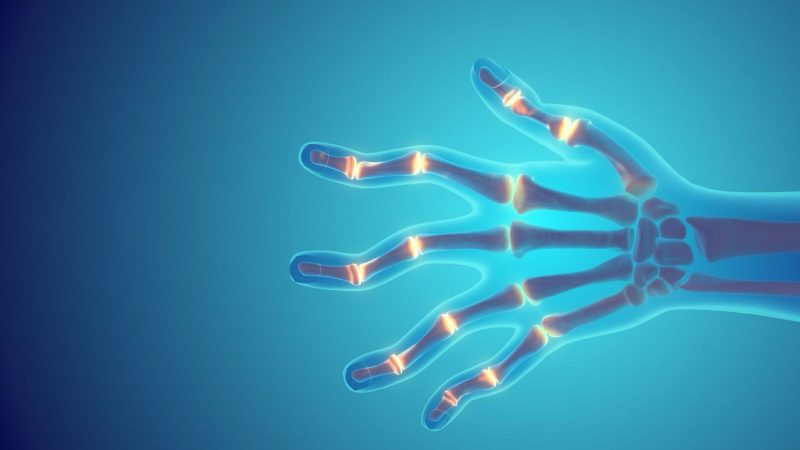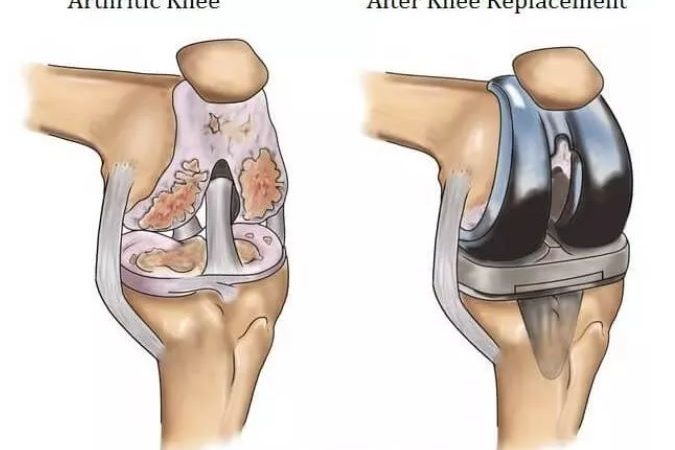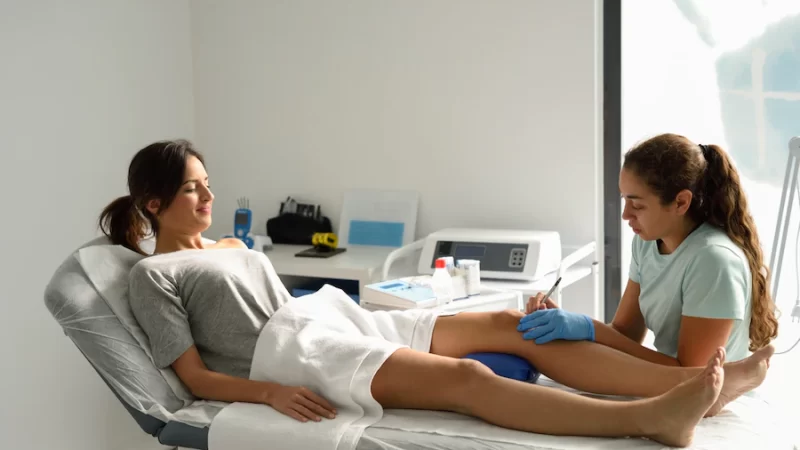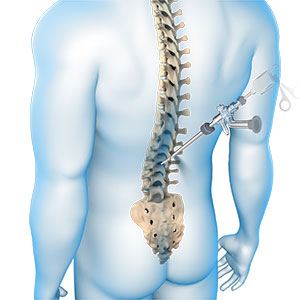Osteoarthritis (OA): Types, Signs, Symptoms, Risk Factors, Diagnostic & Procedures

Osteoarthritis (OA) is one of the most commonly occurring arthritis that affects millions of people around the world, the primary cause being wearing out of the cushioned protective cartilage of the bones. Joints of the hands, knees, hips and spine are the parts which are easily affected by it.
Osteoarthritis most often affects middle-age to elderly people. The disorder is generally referred to as degenerative because in this condition, the joint cartilage (tissue that cushions the ends of the bones between the joints) deteriorates (breaks down) progressively and the patient may suffer from the loss of functions of the affected area/body part such as hand joints, knees, hips, ankles, spinal joints, etc.
Osteoarthritis can cause damage to any joint in the body, but most commonly affects the joints of one’s hands, knees, hips and spine.
Types of Osteoarthritis (OA)
The degenerative (progressive deterioration and loss of function) disorder may be categorized as the following, based on the areas or body parts it affects:
- Hand osteoarthritis
- Hip osteoarthritis
- Knee osteoarthritis
- Foot and ankle osteoarthritis
- Spinal osteoarthritis
Risk Factors of Osteoarthritis (OA)
Osteoarthritis commonly occurs in the hips, knees, spine, hand joints and toes. According to the Johnston County Osteoarthritis Project, a long-term study conducted by the University of North Carolina, the lifetime risk of developing osteoarthritis of the knee is around 46% and that of the hip is around 25%.
Common factors that increase the risk of osteoarthritis may include:
- Age- The risk of OA increases as you grow older.
- Obesity- Being overweight causes several problems in the body. The more you weigh, the greater the risk of you getting affected by osteoarthritis. Fat tissues produce proteins that cause harmful inflammation around the joints.
- Repeated stress on joints- Repetitive stress on the joints may also develop osteoarthritis.
- Metabolic diseases- Diseases like diabetes and hemochromatosis (a condition in which your body has too much iron) may also cause OA.
- Genetics- OA might be inherited to you from your parents in some cases.
- Joint injuries- Injuries from accidents can also increase the risk of osteoarthritis.
Signs & Symptoms of Osteoarthritis (OA)
Every disease/disorder is characterized by certain signs and symptoms specific to it. The symptoms may vary from patient to patient. These are as follows:
- Joint pain: Pain in the joints or affected area is the most common symptom of osteoarthritis. Swelling, creaking of the affected joints and warmth are the signs for you to consult your doctor as soon as possible.
- Neck/lower back pain: This is the sign of osteoarthritis of the spine. An arthritic spine has bony spurs that irritate spinal nerves leading to severe pain, numbness and tingling of the affected body parts.
- Heberden’s node: It is a hard bony enlargement of the small joint at the end of the fingers which is the result of the bone spurs from osteoarthritis. These nodes may not be painful but they do limit the motion of the joints.
DiagnosticProcedures of Osteoarthritis (OA)
X-ray:
X-ray or x-radiation is a specific type of radiation of high-energy electromagnetic waves that penetrates the body and helps in imaging of the bones inside. It is used to:
- Examine a part of your body where you have pain or discomfort.
- Keep track of the progression of a diagnosed disease.
- Check how well a prescribed treatment is performing.
The conditions that may need x-ray imaging include bone cancer, blocked blood vessels, lung complications, fractures, arthritis, osteoporosis, tooth decay, etc.
MRI:
Magnetic Resonance Imaging is a technique that uses radio waves, magnets and a computer to create a detailed picture of the anatomy and physiological processes of the body. It helps in diagnosis of a disease or an injury and in monitoring how well you are responding to a treatment. MRI can be used to detect stroke, eye problems, brain injury, bone infections, damage to the joints, problems in disk of the spine, etc.
Treatment, Diagnosis & Medications
The rheumatologists at Yashoda Hospital & Research Centre, Nehru Nagar, Ghaziabad will check the affected joint for swelling, redness and flexibility during the physical examination. After proper diagnosis using the results obtained from blood tests, joint fluid analysis, X-ray and/or MRI, the following medications might be prescribed to treat the disorder:
Antidepressants may be prescribed to treat the pain in osteoarthritis. Some common antidepressants may include duloxetine (Cymbalta approved by FDA for the treatment of chronic musculoskeletal pain including osteoarthritis pain). Your doctor may prescribe a tricyclic antidepressant like desipramine (Norpramin), nortriptyline (Pamelor) or amitriptyline, etc. Acetaminophens like paracetamol, Tylenol, etc. may be prescribed to help you with the pain from the disorder. You must keep in mind that taking an acetaminophen beyond the prescribed dose may cause liver damage. So always avoid over use of such drugs without consulting your doctor.
Nonsteroidal Anti-Inflammatory Drugs (NSAIDs) like ibuprofen (Motrin, Advil), aspirin, celecoxib (Celebrex), indomethacin (Indocin), etc. may be prescribed for pain relief. NSAIDs may cause stomach upset, cardiovascular problems, bleeding problems and kidney and liver damage. So, strictly avoid over dosage of these drugs. NSAID gels may be a better option for pain relief.
Therapy
Your doctor may suggest some therapies in order to treat your condition. The possible methods may include:
Physical Therapy: Some exercises may be suggested by your therapist to strengthen the muscles around the joint. Regular gentle exercises that you can do on your own like walking, limb movements, etc. may also help you.
Transcutaneous Electrical Nerve Stimulation (TENS): In this procedure, a low-voltage electrical current is used to relieve the pain. Although it provides short term relief, but it may help the patients with severe pain.
Occupational Therapy: This is a personalized method of treating your condition. The occupational therapist may help you in doing everyday tasks without putting extra efforts and thus prevent the affected joint/area from additional stress.
Best Hospitals, Doctors or Specialists for Osteoarthritis (OA) Treatment In Ghaziabad & Delhi NCR
Dr. Vipin Tyagi, who has earned his M.B.B.S. and M.S. in Orthopedics from King George’s Medical College in 1983, is an experienced surgeon at Yashoda Hospital & Research Centre, Nehru Nagar, Ghaziabad. He served as Registrar in the Department of Orthopedics at the renowned Sir Ganga Ram Hospital, New Delhi from 1984 to 1985. After that, he trained himself rigorously abroad under the supervision of acclaimed orthopedic surgeons such as Dr. Ranawat and Prof. Dr. Tria in the USA, Canada, Germany, Switzerland, South Korea and Libya. Dr. Tyagi joined Yashoda Hospital & Research Centre as a Senior Consultant and Head of the Orthopedic Trauma & Joint Replacement Department in 1992 and has performed over 20,000 surgeries successfully as of now.
Dr. Ajay Panwar is the senior consultant & surgeon at Yashoda Hospital rheumatologists. He specializes in orthopedic trauma, hip & knee arthroplasty, sports injuries and arthroscopy. He is an expert in hip and knee replacement surgery.
Dr. Panwar is a well-reputed and one of the most proficient orthopedic doctors in Ghaziabad. He is well-equipped with Orthopedics and owns fellowships in joint replacement and spine surgery, with an experience of over 30 years in this field.
Dr. Rahul Kakran is one of the best orthopedic doctors in Ghaziabad. He has been working for over 11 years in the field of orthopedics and holds experience in treating fractures, dislocated joints and spinal joints. As an experienced expert, Dr. Kakran performs minimally invasive spine surgeries such as percutaneous pedicle screw fixation, TLIF, balloon kyphoplasty and micro-endoscopic discectomy with outstanding results. As of date, he has performed over 500 successful surgeries.
Various independent posterior long segment fixations using MISS technique till D8 level, treating complex fractures of upper and lower limbs, primary joint replacement surgeries and over 500 revision surgeries are some of his expertise.




